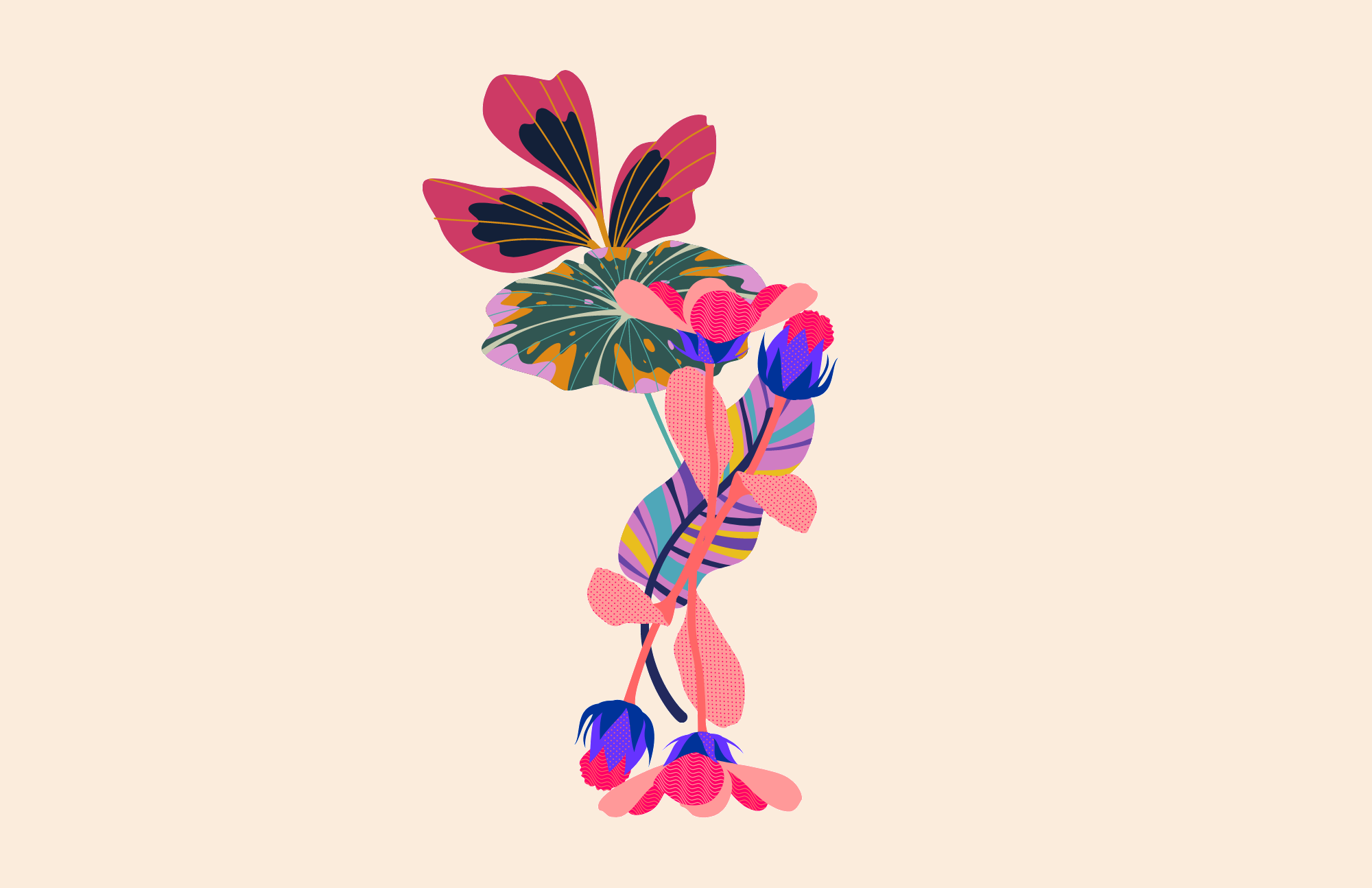GUIDED MEDITATION
USING the beauty around you
This free guided meditation is a gift to you. It is a short meditation and is 6:32 minutes long. It invites you to use the beauty around you to access new, resourcing feelings.
I recommend listening in a comfortable, quiet space where you won’t be interrupted.
Embodied MindfulNess = creative experiencing
In this short video, I share more about one of my favorite aspects of the embodied mindfulness practice that I offer, which is the way it allows people to creatively experience their inner worlds.
GUIDED MEDITATION
For when you feel stuck
This free guided meditation is a gift to you. It is a longer meditation and is 31:24 minutes long. The aim of this meditation is to help you get unstuck, or help you move through an issue that feels stuck in your life.
If you’re able, I recommend listening in a comfortable, quiet space where you won’t be interrupted and where you can easily speak out loud.
WhAT HAPPENS IN
A FOCUSING SESSION?
In this short video I share more about what to expect in a First-Time Guided Focusing Session.
GUIDED MEDITATION
For help with challenging moments
This free guided meditation is a gift to you. It is a medium-length meditation and is 18:51 minutes long. It can help you move through challenge in your life with more space and self-compassion.
If you’re able, I recommend listening in a comfortable, quiet space where you won’t be interrupted and where you can easily speak out loud.
Why is the practice
called Focusing?
In this short video I share more about where the name Focusing comes from and what it means when you practice.
Three Key Aspects of Focusing
by DR. Ann Weiser Cornell
There are three key qualities or aspects which set Focusing apart from any other method of inner awareness and personal growth. The first is something called the “felt sense.” The second is a special quality of engaged, accepting inner attention. And the third is a radical philosophy of what facilitates change. Let’s take these one by one.
The Focusing process involves coming into the body and finding there a special kind of body sensation called a “felt sense.” Eugene Gendlin was the first person to name and point to a felt sense, even though human beings have been having felt senses as long as they’ve been human. A felt sense, to put it simply, is a body sensation that has meaning. You’ve certainly been aware of a felt sense at some time in your life, and possibly you feel them often.
Imagine being on the phone with someone you love who is far away, and you really miss that person, and you just found out in this phone call that you’re not going to be seeing them soon. You get off the phone, and you feel a heaviness in your chest, perhaps around the heart area. Or let’s say you’re sitting in a room full of people and each person is going to take a turn to speak, and as the turn comes closer and closer to you, you feel a tightness in your stomach, like a spring winding tighter and tighter. Or let’s say you’re taking a walk on a beautiful fresh morning, just after a rain, and you come over a hill, and there in the air in front of you is a perfect rainbow, both sides touching the ground, and as you stand there and gaze at it you feel your chest welling up with an expansive, flowing, warm feeling. These are all felt senses.
If you’re operating purely with emotions, then fear is fear. It’s just fear, no more. But if you’re operating on the felt sense level, you can sense that this fear, the one you’re feeling right now, is different from the fear you felt yesterday. Maybe yesterday’s fear was like a cold rock in the stomach, and today’s fear is like a pulling back, withdrawing. As you stay with today’s fear, you start to sense something like a shy creature pulled back into a cave. You get the feeling that if you sit with it long enough, you might even find out the real reason that it is so scared. A felt sense is often subtle, and as you pay attention to it you discover that it is intricate. It has more to it. We have a vocabulary of emotions that we feel over and over again, but every felt sense is different. You can, however, start with an emotion, and then feel the felt sense of it, as you are feeling it in your body right now.
Felt sensing is not something that other methods teach. There is no one else, outside of Focusing, who is talking about this dimension of experience which is not emotion and not thought, which is subtle yet concretely felt, absolutely physically real. Felt sensing is one of the things that makes it Focusing.
The second key aspect of Focusing is a special quality of engaged accepting inner attention.
In the Focusing process, after you are aware of the felt sense, you then bring to it a special quality of attention. One way I like to say this is, you sit down to get to know it better. I like to call this quality “interested curiosity.” By bringing this interested curiosity into a relationship with the felt sense, you are open to sensing that which is there but not yet in words. This process of sensing takes time – it is not instant. So ideally there is a willingness to take that time, to wait, at the edge of not-yet-knowing what this is, patient, accepting, curious, and open. Slowly, you sense more. This can be a bit like coming into a darkened room and sitting, and as your eyes get used to the lower light, you sense more there than you had before. You could also have come into that room and then rushed away again, not caring to sense anything there. It is the caring to, the interest, the wanting to get to know it, that brings the further knowing.
There is not a trying to change anything. There is no doing something to anything. In this sense, this process is very accepting . We accept that this felt sense is here, just as it is, right now. We are interested in how it is. We want to know it, just as it is.
Yet there is something more than just accepting. In this interested curious inner attention, there is also a confident expectation that this felt sense will change in its own way, that it will do something that Gene Gendlin calls “making steps.” What is “making steps”?
The inner world is never static. When you bring awareness to it, it unfolds, moves, becomes its next step.
A woman is Focusing, let’s say, on a heavy feeling in her chest which she feels is connected with a relationship with a friend. The Focuser recently left her job, and she has just discovered that the friend is applying for the position. She has been telling herself that this is not important, but the feeling of something wrong has persisted. Now she sits down to Focus.
She brings awareness into the throat-chest-stomach area of her body and she soon discovers this heavy feeling which has been around all week. She says hello to it. She describes it freshly: “heavy… also tight… especially in the stomach and chest.” Then she sits with it to get to know it better. She is interested and curious. Notice how this interested and curious is the opposite of the telling herself that this is not important which she had been doing before. She waits, with this engaged accepting attention.
She can feel that this part of her is angry. “How could she? How could she do that?” it says about her friend. Ordinarily she would be tempted to tell herself that being angry is inappropriate, but this is Focusing, so she just says to this place, “I hear you,” and keeps waiting. Interested and curious for the “more” that is there.
In a minute she begins to sense that this part of her is also sad. “Sad” surprises her; she didn’t expect sad. She asks, “Oh, what gets you sad?” In response, she senses that it is something about being invalidated. She waits, there is more. Oh, something about not being believed! When she gets that, something about not being believed, a rush of memories comes, all the times she told her friend how difficult her boss was to work for. “It’s as if she didn’t believe me!” is the feeling.
Now our Focuser is feeling relief in her body. This has been a step . The emergence of sad after the anger was also a step. The Focusing process is a series of steps of change, in which each one brings fresh insight, and a fresh body relief, an aha! Is this the end? She could certainly stop here. But if she wanted to continue, she would go back to the “something about not being believed” feeling and again bring to it interested curiosity. It might be that there’s something special for her about not being believed, something linked to her own history, which again brings relief when it is heard and understood.
Focusing brings insight and relief, but that’s not all it brings. It also brings new behavior. In the case of this woman, we can easily imagine that her way of being with her friend will now be more open, more appropriately trusting. It may also be that other areas of her life were bound up with this “not being believed” feeling, and they too will shift after this process. This new behavior happens naturally, easily, without having to be done by will power or effort. And this brings us to the third special quality of Focusing.
The third key quality or aspect which sets Focusing apart from any other method of inner awareness and personal growth is a radical philosophy of what facilitates change.
How do we change? How do we not change? If you are like many of the people who are drawn to Focusing, you probably feel stuck or blocked in one or more areas of your life. There is something about you, or your circumstances, or your feelings and reactions to things, that you would like to change. That is very natural. But let us now contrast two ways of approaching this wish to change.
One way assumes that to have something change, you must make it change. You must do something to it. We can call this the Doing/Fixing way.
The other way, which we can call the Being/Allowing way, assumes that change and flow is the natural course of things, and when something seems not to change, what it needs is attention and awareness, with an attitude of allowing it to be as it is, yet open to its next steps.
Our everyday lives are deeply permeated with the Doing/Fixing assumption. When you tell a friend about a problem, how often is her response to give you advice on fixing the problem? Many of our modern therapy methods carry this assumption as well. Cognitive therapy, for example, asks you to change your self-talk. Hypnotherapy often brings in new images and beliefs to replace the old. So the Being/Allowing philosophy, embodied in Focusing, is a radical philosophy. It turns around our usual expectations and ways of viewing the world. It’s as if I were to say to you that this chair you are sitting on would like to become an elephant, and if you will just give it interested attention it will begin to transform. What a wild idea! Yet that is how wild it sounds, to some deeply ingrained part of ourselves, when we are told that a fear that we have might transform into something which is not at all fear, if it is given interested attention.
When people who are involved in Focusing talk about the “wisdom of the body,” this is what they mean: that the felt sense “knows” what it needs to become next, as surely as a baby knows it needs warmth and comfort and food. As surely as a radish seed knows it will grow into a radish. We never have to tell the felt sense what to become; we never have to make it change. We just need to provide the conditions which allow it to change, like a good gardener providing light and soil and water, but not telling the radish to become a cucumber.
This is a reprint from The Radical Acceptance of Everything: Living a Focusing Life by Ann Weiser Cornell Berkeley, CA: Calluna Press, 2005 and can also be found on Focusing Resources.






